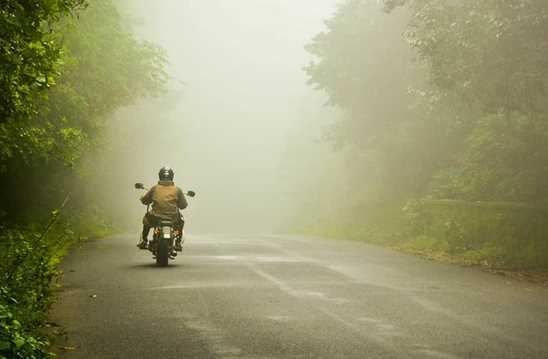Motorcyclists are always out and about, rain or shine. Even when the weather report says a storm is headed our way, many motorcyclists will choose to go out for a ride. Sometimes this is because they aren’t familiar with the weather conditions and they want to see what it’s like.
Other times, motorcyclists might feel like they’re invincible, and nothing will stop them from riding. However, there are some things that all motorcyclists should remember when riding 2022 Harley Davidson motorcycles in unexpected weather conditions.
8 Things to Do When Riding a Motorcycle in Unexpected Weather
1. Slow Down
Motorcyclists are often reminded to “ride in control” and “keep a cool head” while on the road. This is important, especially when encountering bad weather while on a motorcycle.
Riders should always be aware of the possibility of inclement weather and take appropriate steps to avoid hazardous conditions. In some cases, this might mean slowing down to maintain better bike control.
2. Ride in a Staggered Formation
This will help keep you and your fellow riders safe. When riding in a staggered formation, each rider should be spaced equally apart from the rider in front of them. This will minimise the chances of all the riders being affected by any hazard.
If one rider hits a slick spot on the road, for example, they won’t cause the whole group to lose control. It’s also important to make sure that everyone knows the formation before you start riding.
3. Use Your Brakes Wisely
Motorcyclists are often faced with tricky weather conditions and must use their brakes wisely to stay safe. In rainy weather, brake pads can become wet and slick, leading to a loss of traction. If you need to brake suddenly while riding in the rain, do so gently to avoid skidding.
In cold weather, your bike’s brakes may not work as well as they do in warm weather. This is because the brake fluid becomes more viscous in cold weather, reducing braking power. To compensate for this, apply the brakes earlier than you normally would when stopping.
4. Keep Your Distance from Cars
In the rain, sleet, or snow, the danger is even greater. Cars can create a drag on a motorcycle, pulling it down and making it difficult to control. When there is precipitation on the road, this becomes even more dangerous.
The water creates a slick surface that makes it difficult for motorcycles to gain traction. Cars can also splash water onto the motorcyclist, making it difficult to see and potentially leading to a crash.
5. Be Aware of Hydroplaning
Hydroplaning can occur when a thin film of water builds upon the surface of the road, which can cause your motorcycle to lose traction and slide out from under you. There are several things you can do to help prevent hydroplaning while riding a motorcycle.
Keep your speed down and avoid hard braking, as this will create more water on the surface of the road. Also, make sure your tires are properly inflated and in good condition. If you start to hydroplane, gently apply the brakes and steer straight ahead until you regain control.
6. Take It Easy on Turns
Motorcycle riders are often advised to take it easy on turns when the weather is bad. This is because a sudden turn can cause a motorcyclist to lose balance and crash.
Motorcyclists should especially exercise caution on wet or icy roads, as these surfaces can be very slippery. Riders should also be aware of their surroundings and avoid riding in the blind spots of other vehicles.
7. Watch Out for Puddles
Motorcyclists are often caught off guard by rain showers, which can make the roads slick and dangerous. When riding in wet weather, be especially careful of puddles. A large puddle can cause your motorcycle to hydroplane, and you could lose control.
If you encounter a puddle while riding, try to avoid it if possible. If you can’t avoid it, slow down and ride through it at an angle. This will help keep your motorcycle from hydroplaning. Be sure to keep an eye out for other road hazards as well.
8. Be Prepared for the Worst
Bad weather can be unpredictable and dangerous when riding a motorcycle. While you can’t control the weather, there are some things you can do to prepare for it. Always check the weather forecast before you head out on a ride.
If bad weather is expected, consider postponing your ride or choose a different route. Ensure you have enough gear to keep you warm and dry if it starts raining or snowing. In extreme weather conditions, it’s important to take extra precautions.
Conclusion
Riding a motorcycle in any weather is always risky, but it’s especially important to take precautions when the weather is bad. Make sure you know what to do before you hit the road and stay safe while you ride.
What is good about Harley Davidson motorcycles is that they are mostly covered by Harley Davidson insurance. If you are in an accident, your bike is likely to be repaired or replaced quickly, which can save you a lot of money.
Additionally, Harley Davidson finance dealerships are almost always willing to work with you on price, so you can get the bike that you want without breaking the bank.
